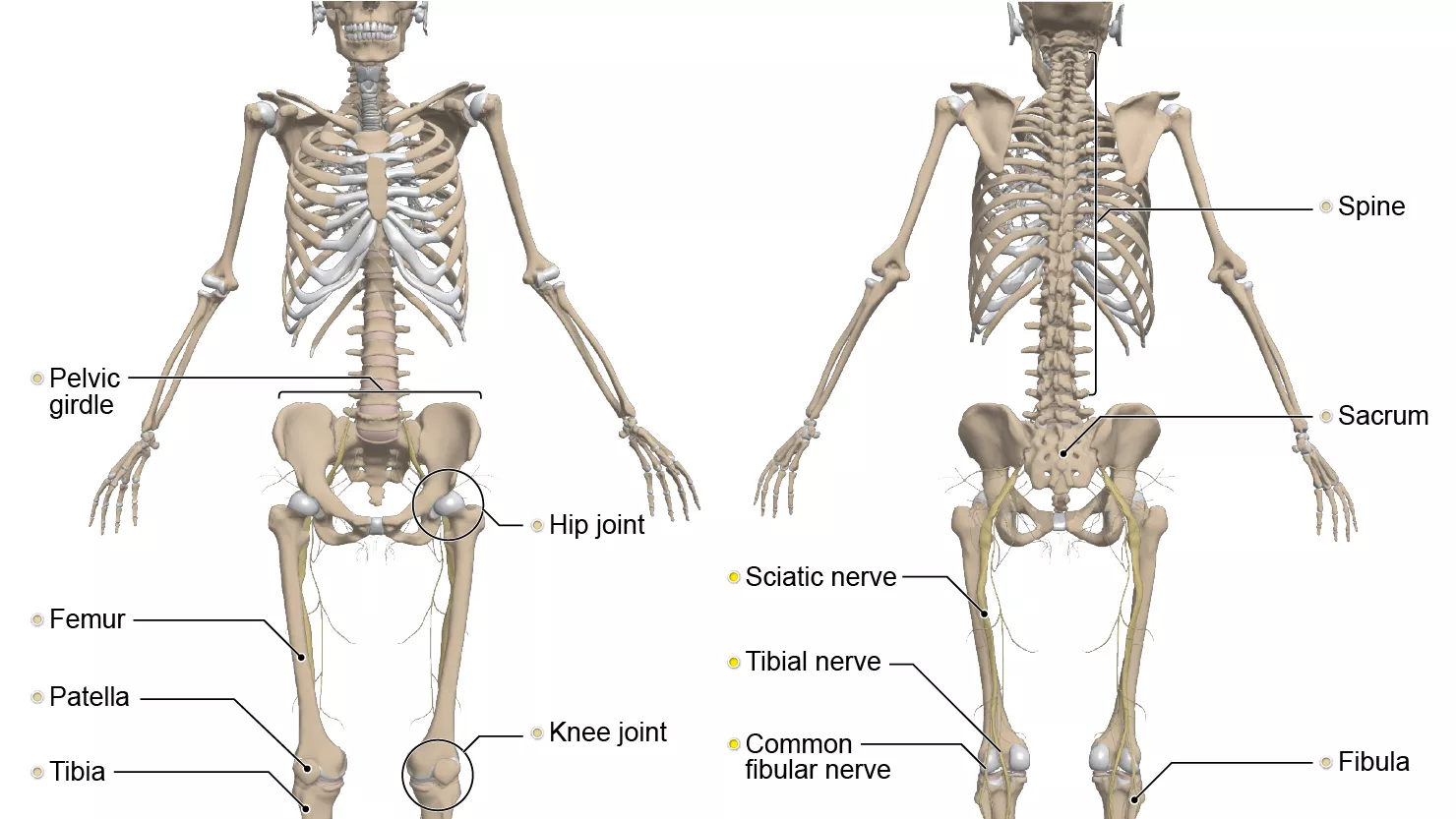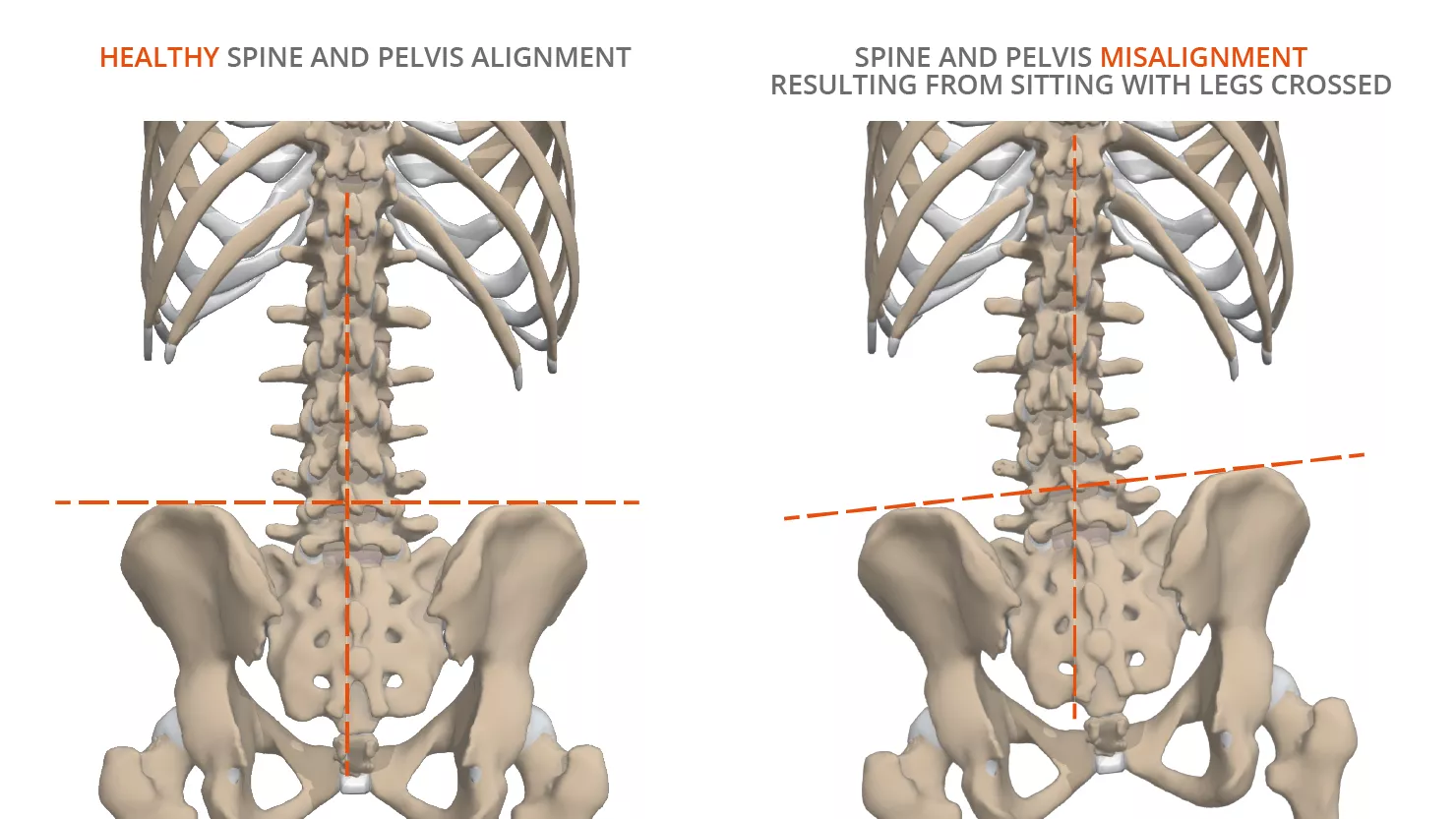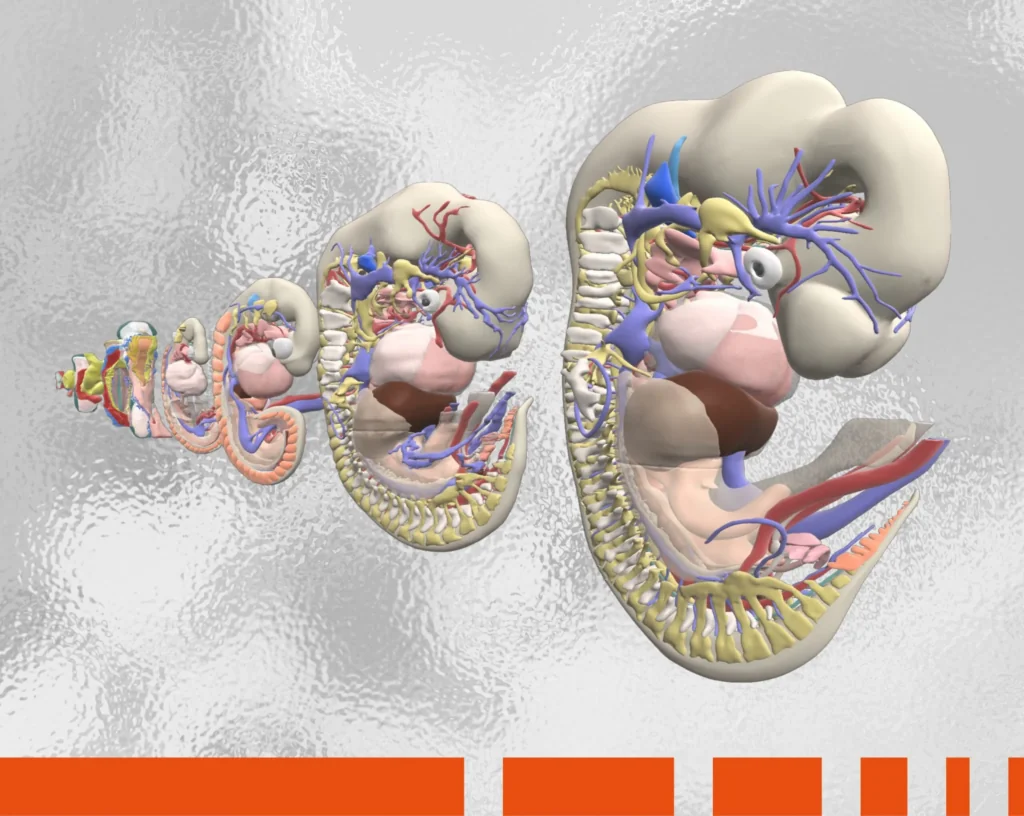Are you sitting cross-legged right now as you read this? Were you aware how your sitting position can negatively impact your body, especially if you sit with your legs crossed at the knee?
On the whole, humans lead a largely sedentary lifestyle. Adults spend an average of 7.7 hours a day sitting, according to a National Health and Nutrition Examination Survey. A sedentary lifestyle can increase the risk of several diseases ranging from diabetes to cardiovascular disease, and even certain cancers.
Let’s take a look at how this sitting position, also known as “European-style” sitting, can wreak havoc on your back, your knees and more. Whether you cross your left leg over your right or vice versa, you may want to uncross your legs to avoid further damage to your body before you continue reading this article.
Why Do We Sit with Our Legs Crossed?
People often sit with legs crossed at the knee for both psychological and physiological reasons. It’s a learned behavior that morphs into a habit, although the act of crossing legs can be seen as a power move in certain settings, such as business or politics.
Depending on the context, sitting cross-legged can mean a person is either relaxed or defensive. Body language experts note that if you see someone sitting this way in a meeting, it may indicate they have emotionally withdrawn from the conversation. They tend to recall fewer details of what was discussed, and you may find it more difficult to persuade them to accept your point of view.
Many whose lower limbs are different lengths sit like this to improve alignment. Dr. Steven Weiniger, a posture expert, explains that many of us sit cross-legged to ease the strain on our lower back. What we don’t realize, however, is that attempts to ease the strain on one part of the body can add to strain on other parts.
It’s All Connected

By crossing your legs at the knee, you might think the only anatomy at risk is your knee. However, this position can also lead to strain on your hips, pelvis and spine.
Let’s start at the knee. Has your leg ever gone numb from crossing one leg on top of the other for too long? This results from pressure being placed on nerves called the common fibular nerve and tibial nerve, which runs behind the knee, thereby cutting sensation to the leg and foot.
Working our way up, the femur (thigh bone) is connected to the pelvic girdle by the hip joint. During standing, the hip joint is designed to bear and transfer weight from the trunk to the lower body whereas in sitting, the weight is transferred to the pelvis itself. When the legs are uncrossed, the weight is distributed evenly on both sides of the pelvis. However, if you cross your legs, this can change your pelvis position and lead to the hips being uneven (Jung et al.). As the weight is tilted to one side of the pelvis, unnecessary pressure is placed on the hip muscles that are responsible for flexion of the hip, and a nerve that runs close to them called the sciatic nerve. Over time this can lead to inflammation of the joint and sciatic pain.
The pelvis is connected to the spine via the sacrum, which is the lower region of the spine. Each region of the spine forms a natural curvature. Maintaining healthy spinal curvature is extremely important as it provides strength when the body is in the upright position by distributing the weight evenly and acting as shock absorbers. When the pelvis becomes rotated and tilted to one side while sitting with legs crossed, the pelvis not only bears weight ineffectively but also the ligaments connecting the pelvis to the sacrum become strained. This can leave your spine unstable and disrupt the natural curvature even as far up as your neck!
So, How Bad Can It Get Sitting with Legs Crossed?

Several studies have revealed that crossing a leg while sitting can cause spinal deformities including scoliosis. Another study carried out in 2016 showed that cross-legged sitting leads to a bent and asymmetrical posture, and is more pronounced in patients with lower back pain. Consequently, poor posture resulting from prolonged cross-legged sitting can slow down digestion and increase stress.
But You Can Cross These Myths off Your Bad-for-Me List
- Crossing legs for long periods may disrupt blood circulation in the area due to the weight of the leg on top of the other leg compressing the veins passing behind the knee. However, there is currently no clear evidence to support the impact of sitting with legs crossed on developing varicose veins or deep vein thrombosis.
- While sitting with your legs crossed is safe for pregnant women, it may contribute to ankle swelling or leg cramps if the position is prolonged.
- In men, crossing legs while wearing pants raises the temperature of the groin, leading to the suggestion that would-be fathers should not cross their legs. However, doing so for short periods does not reduce sperm count.
- A study published in the Journal of Clinical Nursing found a significant increase in blood pressure when participants crossed their legs at the knee level. Subsequent studies have found this is temporary and most likely to occur in people already diagnosed with hypertension.
- Your leg or your foot can experience temporary numbness by applying excess pressure on the common fibular nerve behind the knee, which supplies sensation to the lower extremities. However, you don’t have to worry about nerve damage.
Everything in Moderation
Dr. Naresh Rao, of NYU’s Langone Medical Center and medical advisor to the 2016 U.S. Olympic water polo team, cautions against sitting crossed-legged “for longer than you drink a cup of coffee.”
Furthermore, not only must sitting cross-legged be cautioned, but prolonged sitting in general. Health authorities warn that “sitting is the new smoking.” This has led to a surge in the popularity of standing desks, enabling people to work while standing, and apps that alert you when you’ve been sitting too long. An additional bonus, based on data pooled from dozens of studies, is that you can burn an extra 100 calories a day by standing vs. sitting.
If you are still sitting with your legs crossed right now, how about uncrossing them for a minute and standing up to give your whole body a good break?
The images used in this piece have been taken from Primal’s 3D Real-time module. To learn more about this or other Primal digital anatomy and physiology content – please fill in the form here and our team will be in touch.
Business photo created by gpointstudio – www.freepik.com

